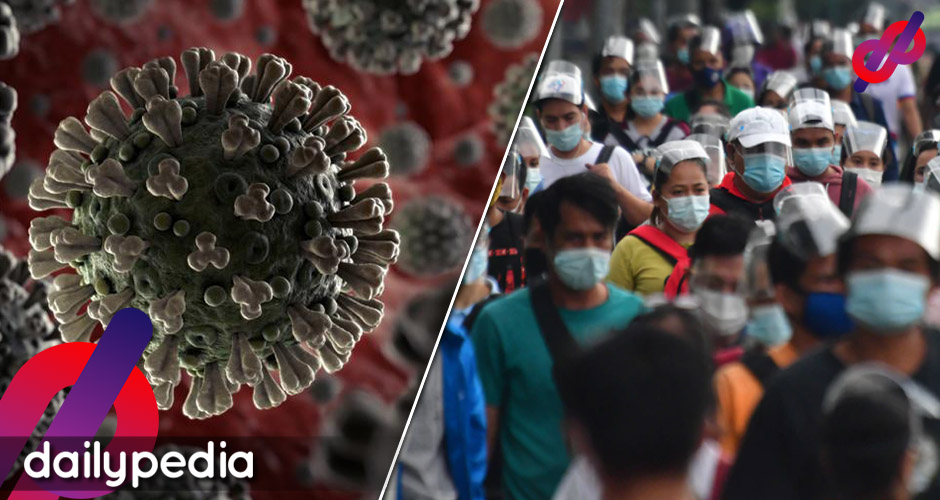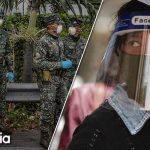Is the government’s interim guideline on expanded COVID-19 testing to be blamed for the latest surge of cases? Some Netizens seem to think so, especially when it comes to asymptomatics.

The National Task Force for COVID-19 or the Inter-Agency Task Force on Emerging Infectious Diseases (IATF-EID)–was called out by Netizen Peter Cayton (@PJACaytonPhD). He asked the task force to rid its a months-old guideline on COVID-19 testing.
IATF GISING!
TANGGALIN NIYO NA YUNG GUIDELINE NIYO NA SYMPTOMATIC LANG ANG MAGPAPATEST.
DAPAT KUNG FIRST-TO-THIRD DEGREE CONTACT NG ISANG COVID CASE, TEST NA DAPAT.
PERO PUNYETA KUMUSTA CONTACT TRACINF? https://t.co/zZWrFH5yOf
— Peter Cayton, the Stats Guy (@PJACaytonPhD) March 17, 2021
“Wake up, IATF! Throw out your guideline that only symptomatic cases should be tested,” said the Netizen in his tweet on March 17.
In a tweet by US-based epidemiologist and health economist Eric Feigl-Ding, asymptomatic transmission without symptoms is real, he shared as proof.
Just a reminder. ASYMPTOMATIC transmission without symptoms is real. I & others screamed about this last year. But many kept saying no precaution needed if no symptoms. They were wrong, & many who still ignore – are more wrong today. And #COVID19 pandemic is worse because of it. pic.twitter.com/hWDeJq1rZt
— Eric Feigl-Ding (@DrEricDing) March 16, 2021
“I and others screamed about this last year, but many kept saying no precaution needed if no symptoms. They were wrong,” said Feigl-Ding.
One would assume that the IATF, particularly the Department of Health (DOH), is aware of such, after admitting back in June 2020 that asymptomatic cases can transmit SARS-CoV-2.
However, the DOH has yet to update its guidelines for COVID-19 testing.
The last time their Omnibus Interim Guidelines on Prevention, Detection, Isolation, Treatment, and Reintegration Strategies for COVID-19 was updated was on October 6, 2020. It was when cases started dropping to roughly 2,500 cases per day.
According to Department Memorandum No. 2020-0439, “Second-generation and third-generation close contacts and general contacts shall be advised to self-monitor and strictly adhere to minimum health standards.”
This means families and friends of the close contact—or first-degree—need not be subjected to a COVID-19 test.
The memo also stated that second and third-degree contacts should merely “report for the appearance of signs or symptoms.”
Even contacts of suspected cases are supposedly not meant-to-be tested for COVID-19.
“Contacts of suspect cases shall be notified and advised to self-monitor and adhere to stringent minimum public health standards,” said the DOH in their memo.
Also, contacts can only undergo either quarantine or isolation should the suspect case be elevated to probable or confirmed.
The DOH memo also said the reason for this policy—alongside a priority list covering a portion of the population—is the “global shortage of testing kits” as well as “limitation in local capacity for testing.”
Such goes against a previous statement from Malacañang.
Palace spokesperson Harry Roque in December 2020, claimed that the Philippines had one of the highest testing capacities in Asia. Earning the ire of Netizens–Duterte stressed the importance and how expensive the testing (for COVID-19) was.
Weak contact tracing?
Roque also admitted that though the Duterte administration has handled the pandemic “excellently,” there was one hole in its armor: that is contact tracing.
https://twitter.com/joseph_morong/status/1369974823917477891
“Hindi ko maintindihan kung bakit itong StaySafe Philippines ay hindi pa tuluyang naipapatupad… kinakialangan talaga nating mag-automate dahil ito ang pinakamahina sa ating response sa ngayon… ang ating tracing,” Roque said in a briefing on March 11.
He added that the contact tracing czar and Baguio City Mayor Benjamin Magalong shared the same opinion. However, he insisted on prevention, isolation, treatment, and tracing as the focal point for fighting COVID-19.
StaySafePH, a proprietary contact tracing app used by the IATF, has been in the App Store and on Google Play for nine months. However, it is only getting fully-utilized this year.
RELATED: It’s going to be all systems go for the StaySafe contact tracing application in a few days’ time, assured Presidential Spokesperson Harry Roque https://t.co/2LIn00GD0W
— News Watch Plus PH (@newswatchplusph) March 15, 2021
It took the entire nine months before the app was deemed useable for large-scale use.
On March 12, Roque said the app is fully-implemented in 10 days, with the DILG taking the lead. He also said that local government units with their contact tracing apps must ensure interoperability or compatibility with the StaySafePH app.
This statement got released a day after the application’s developers said–the DOH was not ready to take over the data obtained from the app.


